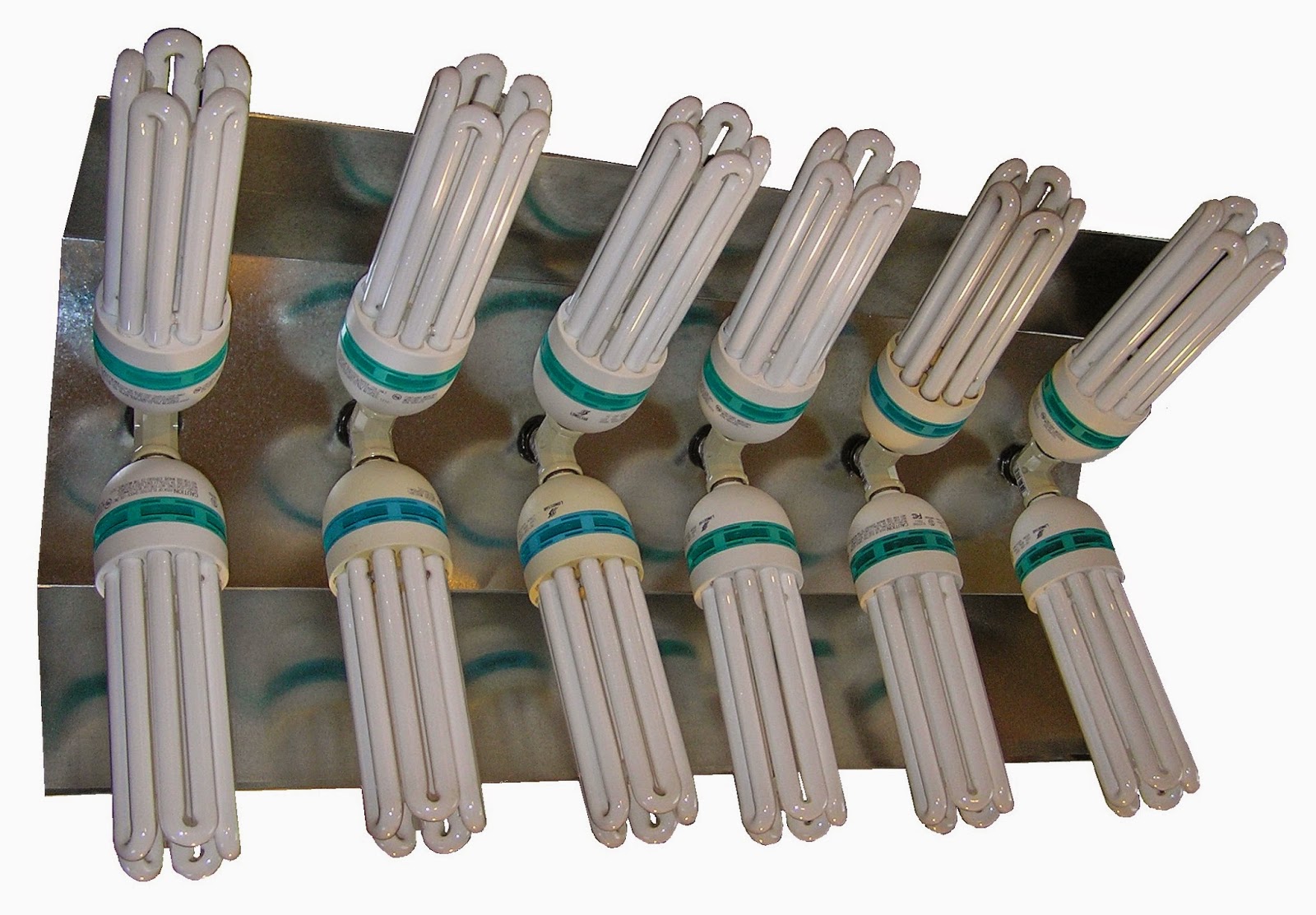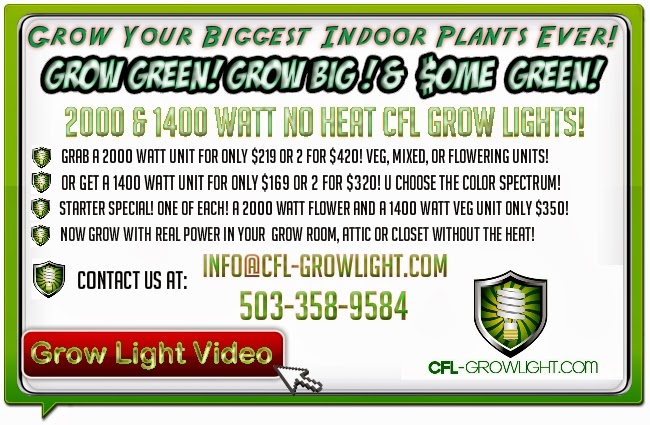HOLY SH**!
MegaMax 4,800w equiv CFL Grow Light!

GROW YOUR DANK WITHOUT BU$TING THE BANK!
|
"NO OTHER GROW LIGHT PLACES MORE OF THE EXACT LIGHT YOUR PLANTS NEED IN THE CORRECT KELVIN SPECTRUM'S THAN THE MEGAMAX"
GROW MASSIVE COLA'S!
CLOSEST TO NATURAL SUMMER SUN!
LESS HEAT IN YOUR GROW ROOM
The 4,800 watt MegaMax CFL Grow Light unit delivers over 74.400 lumen in the CORRECT spectrums to your plants without wasted heat or light.
Compare to 1,000w HPS with 150K total lumen & ONLY 20,000 in the CORRECT spectrums your plants need to thrive!
"NO MORE REPLACING BULBS EVERY FREAKEN CYCLE"
|
The Urban Organic Gardener
Saturday, March 8, 2014
The LED Grow Light Revolution
Tuesday, January 7, 2014
How To Properly Grow An Indoor Garden
How To Properly Grow An Organic Garden
You know the health benefits of growing your own organic garden, that is why you put the time and effort into it. Use the great information provided in this article to build upon your own current knowledge and hopefully, learn something new to maximize the benefits both for you and everyone you know.Making your own compost for organic gardening is extremely simple and easy to do. It provides soil of gardens with rich nutrients and keeps soil cool during summer months. You can use kitchen waste, sawdust, aquarium water, coffee grounds, tea leaves, rabbit or hamster droppings, a thin layer of lawn clippings, spices and eggshells in your compost.
So you don't shock the plants, you should gradually get them use to a change in the temperature and conditions. Put them outdoors in the sun for no more than two hours the first day. As you continue the first week of the project, gradually extend the duration of sun exposure. By the week's end, your plants should then be ready for the big move!
TIP!
Grow seasonings and kitchen herbs in your garden. Herbs are generally
very simple to grow, and can even be made to thrive in a window box or
indoor pot.
 When starting your organic garden, you
must be sure you have the proper size containers because containers are
crucial for holding your plants. Your containers should be around two
or three inches in depth for them to be effective. In addition, you
should make sure you have holes in the bottom of your containers for
drainage purposes.
When starting your organic garden, you
must be sure you have the proper size containers because containers are
crucial for holding your plants. Your containers should be around two
or three inches in depth for them to be effective. In addition, you
should make sure you have holes in the bottom of your containers for
drainage purposes.If Growing indoors then you must consider what type of indoor plant grow lighting you'll use. While HPS & MH grow lights still account for the majority, new grow lights like CFL grow lights and LED grow lights are becoming more common. This is because of the increased light in the correct spectrum's plants need. Low heat and low power consumption also aid in helping to drive the cost of these grow lights down over traditional grow lamps..
A great first step to having a successful organic garden is to test the acidity of the soil in your garden. The ideal number is 6.5, if your soil is on the low end, it's too acidic and if it's on the high end it's too alkaline. Neither of those situations lends itself to a successful garden. So by purchasing a soil testing kit before planting, you will assure yourself a beautiful organic garden in the summer.
You should
Tuesday, July 16, 2013
Grow A Wholesome Urban Organic Garden With These Tips
 Should you be completely new . . .
Should you be completely new . . .
To the world of organic gardening, then you are probably convinced that many ways on organic indoor gardening will help you immensely to enable you to begin growing your personal organic plants. Listed below are many ways to help you get started along with your organic gardening endeavors. If you are intending on getting into gardening, be sure to purchase the right tools and equipment necessary to do all the tasks. This will help insure that you do not end up ruining your garden by using improper tools and wasting a lot of time and energy for naught.
TIP! For planting spring bulbs in the winter, decide where you want them to go and dig individual planting holes at the correct spacing. Place some small four inch plastic pots inside the holes with the rims slightly exposed and fill with soil.
TIP! Wait for the right moment if you plan on dividing a plant. Leave perhaps two years to grow and divide it at the end of the season when it looks at its best.

TIP! One of the best ways to maximize the benefits of a garden is to learn how to can. Water bath canning is an effective way to store fresh vegetables for a very long time and is not that difficult to learn how to do.
HOLY SH**!
MegaMax 4,800w equiv CFL Grow Light!

GROW YOUR DANK WITHOUT BU$TING THE BANK!
|
"NO OTHER GROW LIGHT PLACES MORE OF THE EXACT LIGHT YOUR PLANTS NEED IN THE CORRECT KELVIN SPECTRUM'S THAN THE MEGAMAX"
GROW MASSIVE COLA'S!
CLOSEST TO NATURAL SUMMER SUN!
LESS HEAT IN YOUR GROW ROOM
The 4,800 watt MegaMax CFL Grow Light unit delivers over 74.400 lumen in the CORRECT spectrums to your plants without wasted heat or light.
Compare to 1,000w HPS with 150K total lumen & ONLY 20,000 in the CORRECT spectrums your plants need to thrive!
"NO MORE REPLACING BULBS EVERY FREAKEN CYCLE"
|
Subscribe to:
Posts (Atom)
